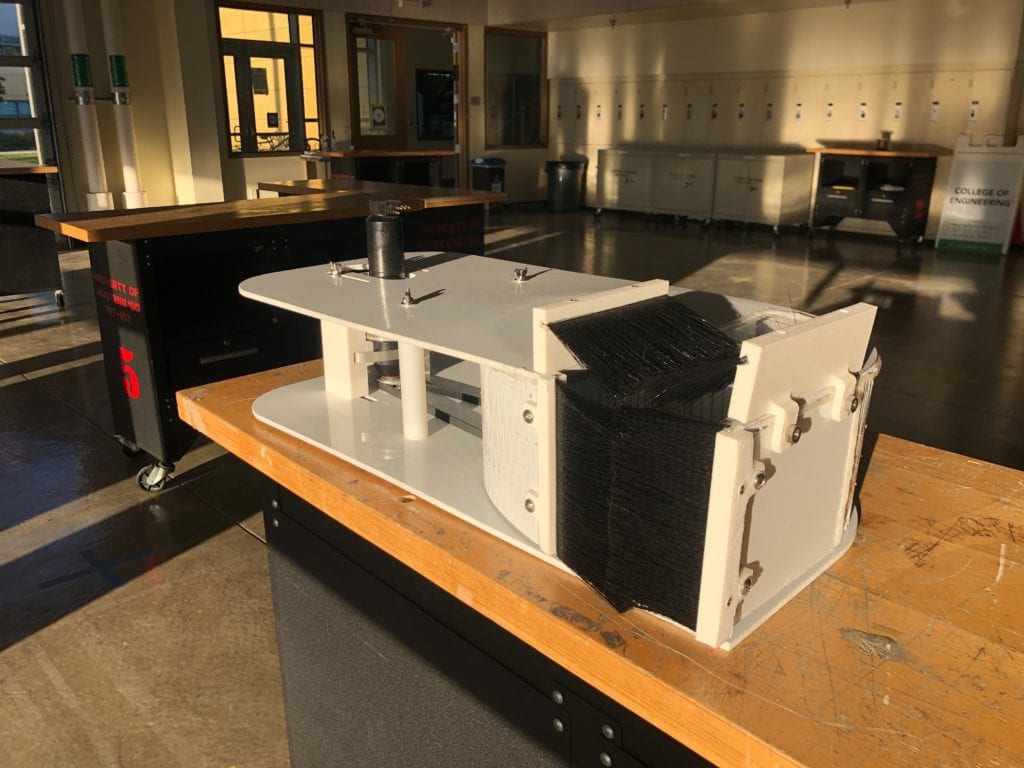Our Team
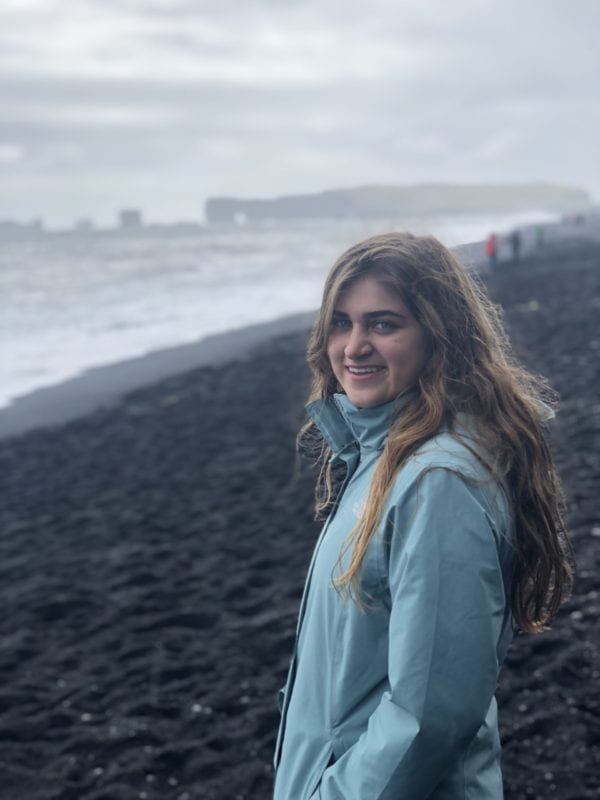
Sara Passantino
Shipwreck sara
My interests in engineering live in the worlds of composites and product design and development. After graduation, I look forward to starting my career in the outdoor industry where I can combine my interests in engineering with my passions for the outdoors and mountain biking to make some rad products.

Thomas Smith
Tidepool thomas
I am a fifth-year mechanical engineer with interests in energy and geophysics. Eventually I hope to work for the state department with a background in engineering. I have spent my summers working for ski companies and working with composites. I am from Salt Lake City, Utah and I enjoy skiing and kitesurfing.
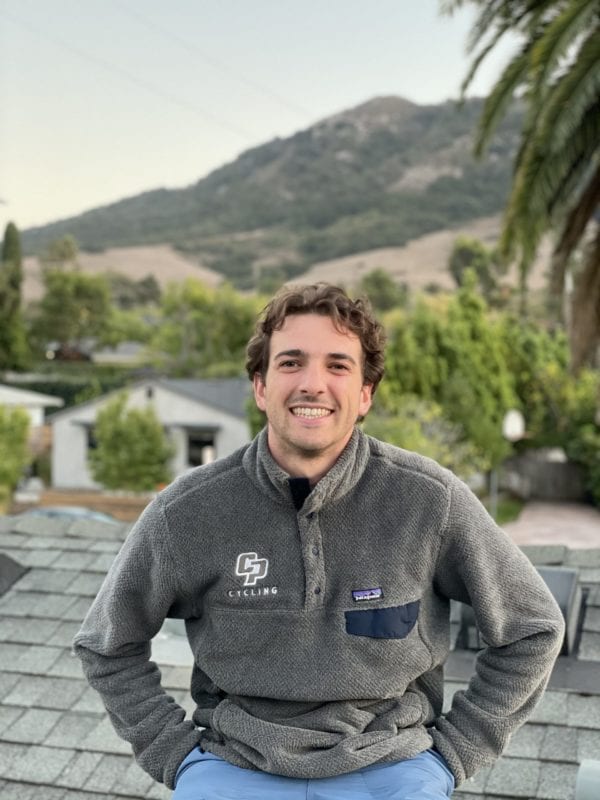
Casey Smith
Coral Casey
I’m a California native and outdoors lover. When I’m not in the shop or studying, I can be found mountain biking, backcountry skiing, or out surfing. I’m forever grateful for my last few years in San Luis Obispo and am looking forward to starting my career in the Product Development field wherever I end up!

Andrew Noble
Anenome Andrew
My interests in engineering include engineering, robotics, and manufacturing. I grew up skiing, hiking, fishing, and dog mushing, so I was especially excited for the conservation facet of the carousel sampler. In the future I hope I can find a career that allows me to continue to engineer with a purpose.
Acknowledgements
We just want to acknowledge and thank Dirk Rosen and the Marine Applied Research and Exploration Group for our project and the opportunity to contribute ocean ecosystem preservation. Also, we wanted to thank our project advisor, Dr. Rossman, for always providing guidance and expertise.
Our Project's Videos
Our Project's Digital Poster
Introduction
Who is MARE?
The Marine Applied Research and Exploration Group (MARE), is a non-profit organization founded in 2003 “to explore and document deep-water ecosystems to assist in their conservation and management” (MARE) using underwater remotely operated vehicles (ROVs).
MARE focuses on collecting these benthic samples to aid ocean research and the mapping of the deep–sea reefs for conservation.
The Previous Solution
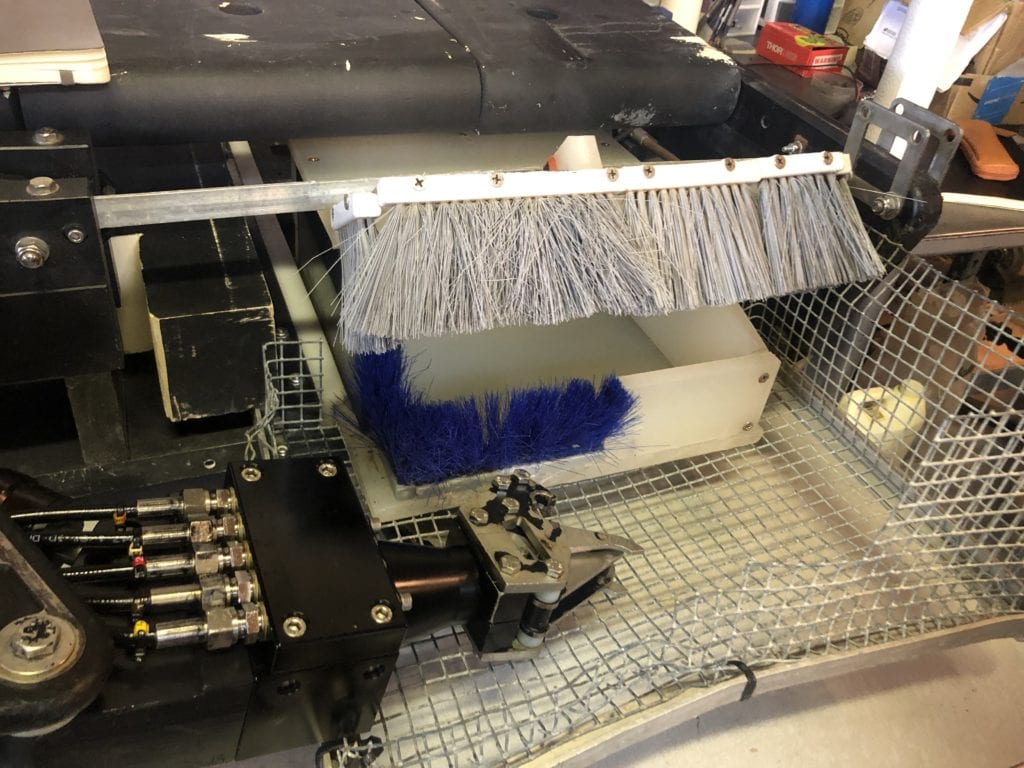
MARE’s previous solution was just a simple box, driven to open and close via a linear actuator. The major downfall of this system is its inability to collect discrete samples.
The Need
To collect these benthic samples, MARE needs a needs a new BIOBOX with the following specifications:
SPEC | DESCRIPTION | TARGET | TOLERANCE |
1 | Number of Samples | 3 or 4 | Min |
2 | Size | 15” x 25” x 6” | Max |
3 | Weight | 8 lb. | Max |
4 | Pressure | 900 psi | Up to |
5 | Cost | $1000 | Max |
6 | Silt Resistance | 0.05” Clearance | Min |
7 | Corrosion | None | — |
8 | Safety Factor | 2 | — |
Ideation
The Initial Carousel Concept Sketch:
- Allows for discrete sampling
- Compatible with motor MARE already has
- Fits within the designated space constrains

- Geared carousel bottom to drive the system via a motor and belt
- “Baleen” bristles to trap samples entering the container
- 4 discrete sampling locations provided by rotating dividers
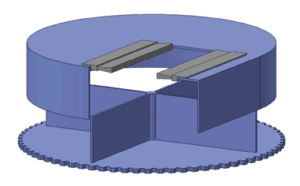
Concept Prototype:
- Added slots on the partitions to allow for easier movement in a submerged environment
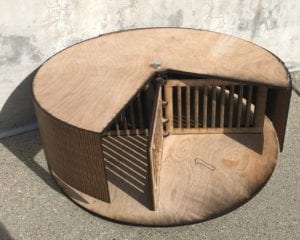
Material Selection
Since MARE hopes for the box to weight under 8 pounds in water, we looked to choose a material that was positively buoyant and non-corrosive. With this and talking with our sponsor about his experience with materials, we chose polypropylene.
Polypropylene Density: 905 kg/m^3
Since this is less dense than water, polypropylene is positively buoyant in water, making it a good material choice.
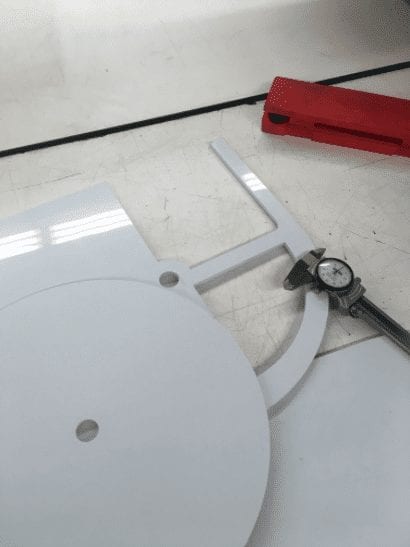
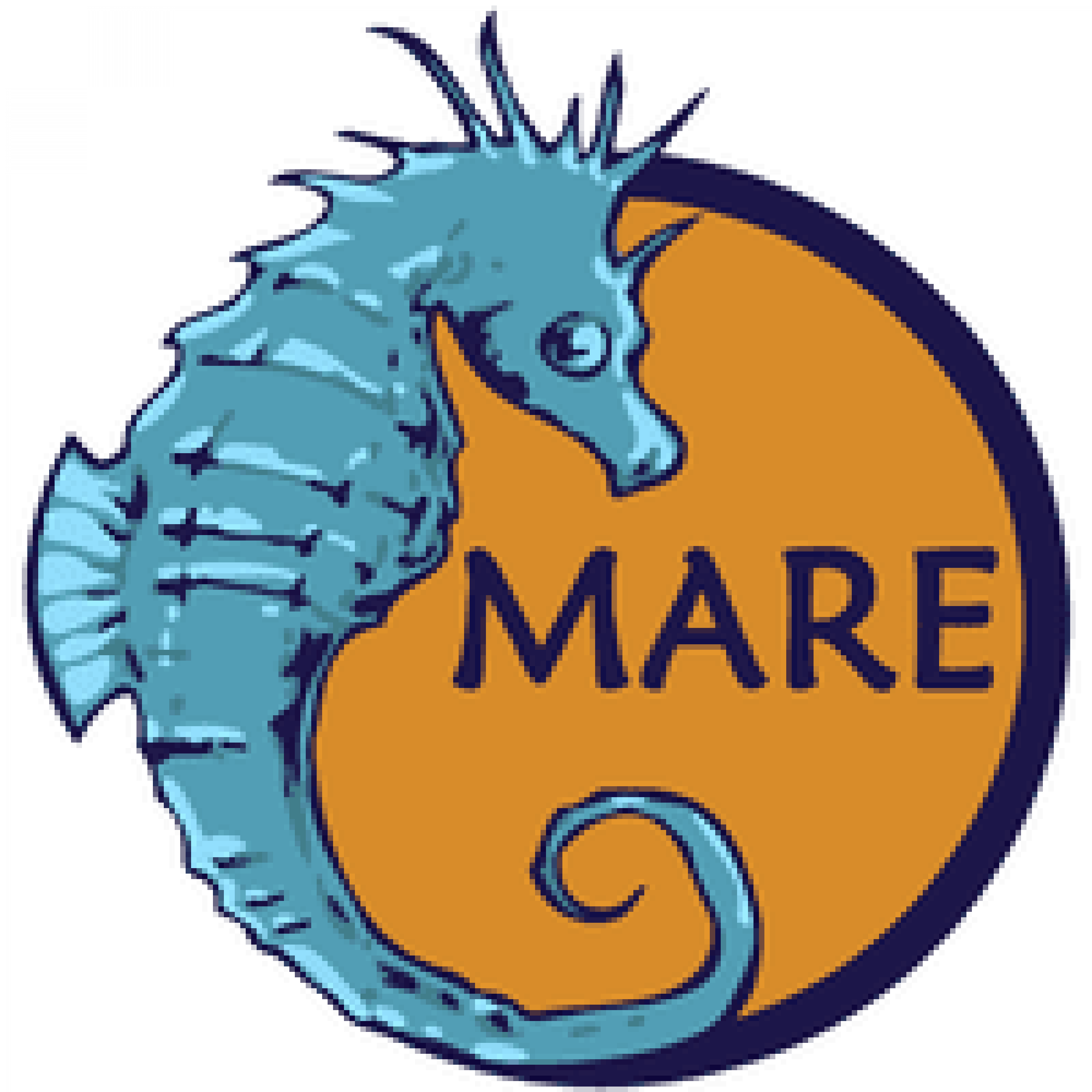
This project is sponsored by Marine Applied Research Group (MARE)
The Final Design

The systems operate in conjunction with each other to receive and store coral and sponge samples placed inside the system via the manipulator arm through the baleen entry subsystem. Once the sample is trapped between the fixed lid and base subsystem and the manipulator arm has been removed, the drive system with turn the internal carousel subsystem by a motor, belt, and gear assembly. Once the carousel has completed 90 degrees of rotation, the sample will be secured within the system and the system will be ready to receive a new, discrete sample.
The Subsystems
The Entry System:

The entry system is designed to receive and capture the sample placed within the system by the manipulator arm. Four “baleen” brushes, secured at an inward sloping angle, act to easily allow the manipulator arm and sample to enter the system, while making an exit from the system difficult for the sample. This system has been lifted from the top surface to make the sample deposit easier and assure that the brushes will not contact the internal rotating component. Due to expected wear and tear, the brushes will be modular and replaceable for easy maintenance.
The Lid:
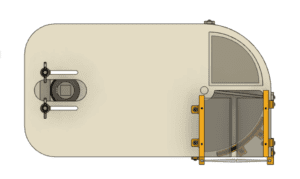
The lid system is used to capture the rotating system and provide a means to secure the overall system to the skid on the ROV. The lid consists of the top “plate” and the curved surface that closes the system. This system also includes an acrylic window, allowing for the viewing of the sample as they enter the container.
The Carousel:
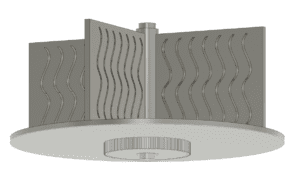
The carousel is the rotating component of the overall system, working to move a sample placed in the container to the secured area under the lid for storage. The carousel is spun by a belt-driven gear secured under the carousel’s bottom circle. The carousel consists of four slotted partitions that allow for discrete sampling while letting water pass through them to ease the torque put on the drive system when the system is submerged.
The Base:
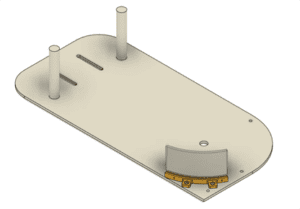
The base subsystem remains fixed relative the general system, capturing the rotating carousel with a locating hole that the stepped shaft from the carousel will rest in. The base also acts as half of the tensioning mechanism for the driving belt.
The Drive System:
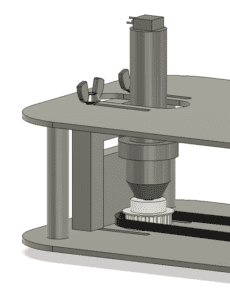
The drive system consists of the motor supplied and marine-proofed by MARE, an off the shelf flanged drive pulley, an off the shelf 3/8th inch geared belt, and the waterjet -cut driven pulley which is attached to the carousel. The motor is connected to the electrical system onboard the ROV Beagle and controlled by a simple switch on board the vessel the ROV Beagle is tethered. The motor turns counterclockwise when it receives a positive voltage input from the controller and turns clockwise when it receives a negative voltage from the controller. This allows for the system rotation to be easily controlled by the ROV controller.
Tensioning in the belt of the drive system is accounted for by securing the motor to the back plate via a hose clamp, then moving the motor assembly back within the corresponding tensioning slots on the lid and base. When the belt is properly tensioned, the assembly will be tightened in place by wingnuts, making for easy adjustment.
Manufacturing
The Final Product
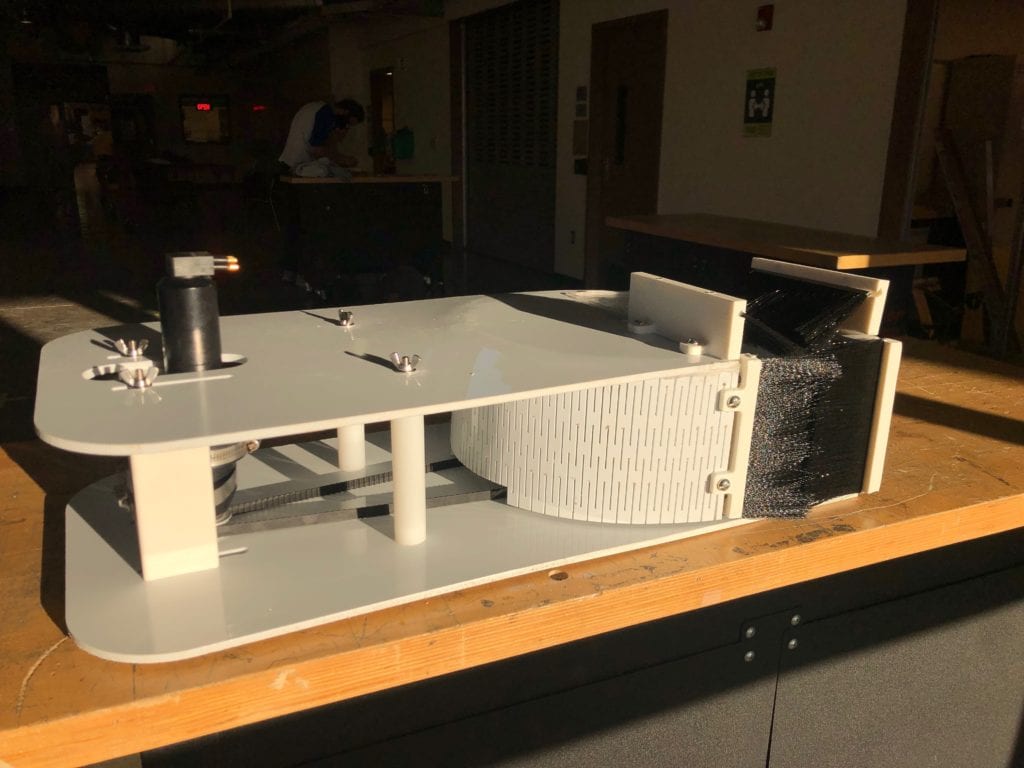
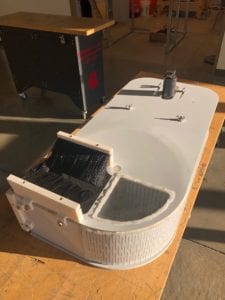
- Custom Components
- Polypro structure
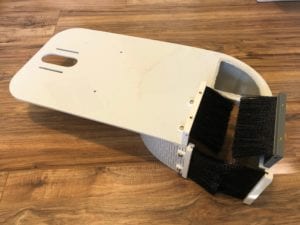
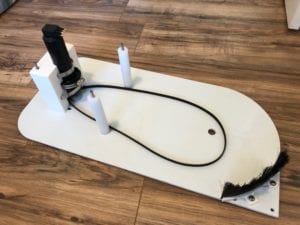
- Motor mount
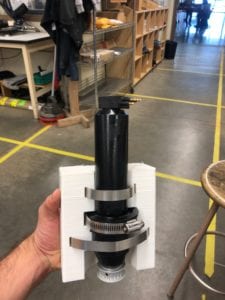
- Brush holders
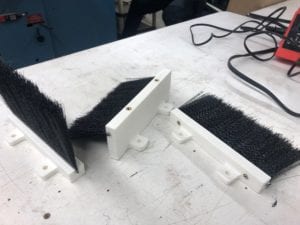
- Base gear
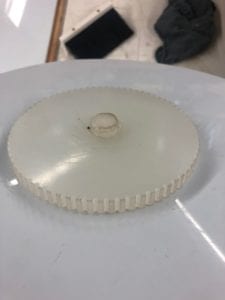
- Fasteners
- Belt and pulley
- Hose clamps
Testing
Due to the time and access constraints created by the ongoing COVID-19 pandemic, much of our testing that we planned to do at MARE’s facility with our sponsor was not able to take place. That being said, we were able to complete the following test and look forward to the testing that our sponsor will complete. However, we are happy to have met the bulk of our engineering specifications:
Meeting Our Engineering Specifications
1:Ability to accept 4 discrete samples – PASS
2: Fits within 15″ x 25″ X 6″ : PASS
3: Weighs 8 lbs or less in water: PASS
4: Can withstand up 900 psi: UNTESTED
5: Costs under $1000: PASS
6: Has at least 0.05″ clearance for silt between moving parts: PASS
7: Corrosion resistant: PASS
8: Factor of Safety of 2: UNTESTED
Improvements and Recommendations
- The team had considerable difficulty with plastic welding of the polypropylene, so we recommend that mechanical fasteners be used wherever possible in future projects working with plastic. We encountered unintended warping of the base material with this process which was problematic for tolerances.
- Polypropylene does not mill well, so designs in the future should avoid milling processes.
- Waterjet cutting was a terrific way to cut the desired geometry from polypropylene.
- 3D printing was useful in integrating other part of complex geometry like the waterproofed motor. We would recommend that 3D printing be considered for future projects.
- The slit patterning used for the curved sidewall part was an excellent solution to creating curvature in the polypropylene.

